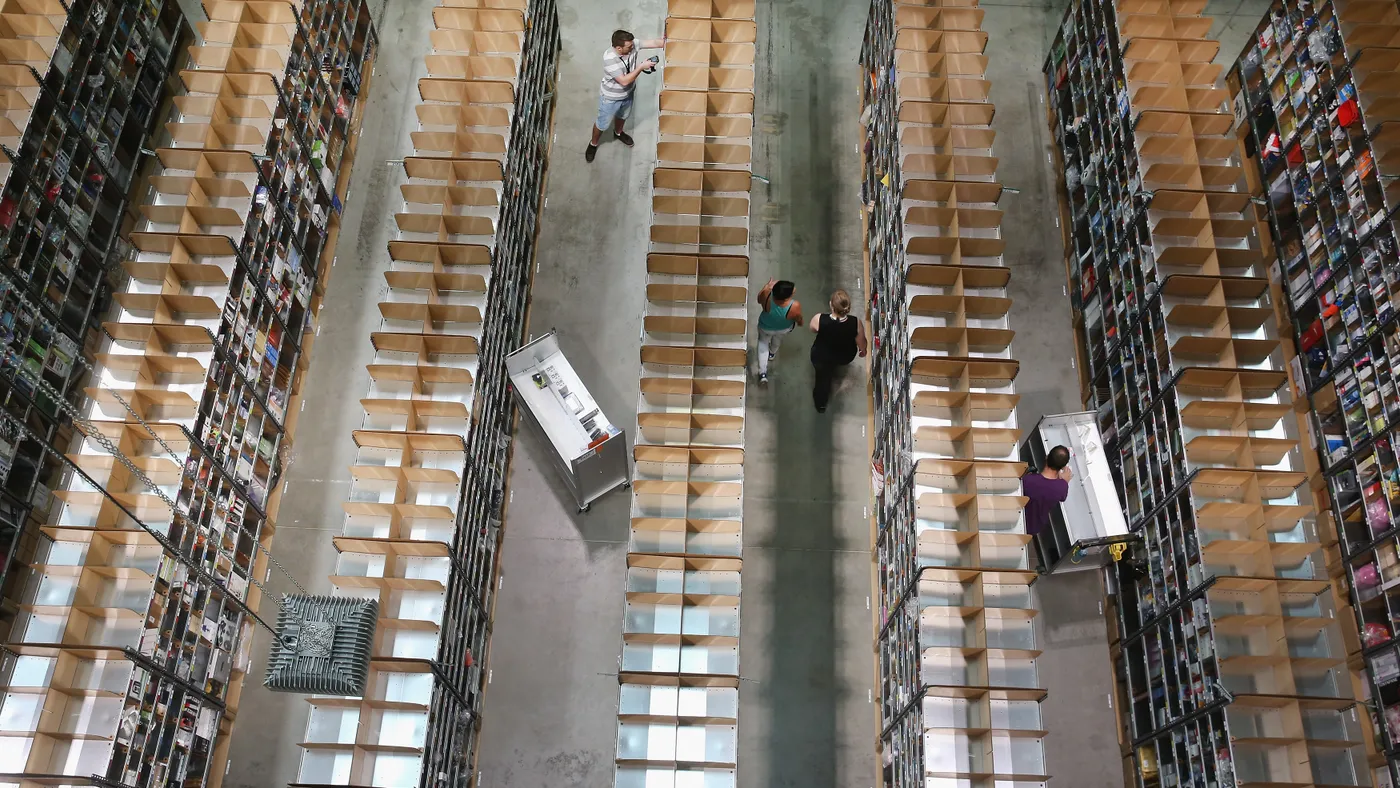By: Daphne Howland
• Published Dec. 19, 2024
Several major retailers in the U.S. use a century-old accounting practice known as “the retail inventory method,” which relies on retail prices to estimate inventory, even though it fails to take full advantage of modern technology and distorts business metrics and tactics.
“It also creates a lot of games,” said Paula Rosenblum, a retail analyst and co-founder of RSR Research, who has criticized the practice for years. “One of the reasons merchants don't want to give it up is that they get to play some serious games with it.”
Judging by explanations given by multiple companies in their annual reports, the retail inventory method, or RIM, is employed because of its “practicality” and widespread use in the industry. However, at least one retailer, Dillard’s, also pinpoints the very aspects that many experts see as problematic.
“Inherent in the retail inventory method calculation are certain significant management judgments including, among others, merchandise markon, markups and markdowns, which significantly impact the ending inventory valuation at cost as well as the resulting gross margins,” according to financial filings from the department store.
What that means, experts warn, is that the retail inventory method interferes with sound merchandising and pricing decisions. RIM can even muddy the picture when it comes to inventory shrink.
One of the reasons merchants don’t want to give [RIM] up is that they get to play some serious games with it.
Paula Rosenblum
Co-founder, RSR Research
However, there is a superior alternative, known as “cost accounting.” This method is more dependable because it makes the most of 21st-century data systems, and because, as its name implies, it’s based on what a retailer paid for inventory — which, unlike what inventory sells for, doesn’t waver.
Oliver Chen, managing director and senior equity research analyst at TD Cowen, for years has touted the value of replacing RIM with the cost method of accounting.
“These companies need to get faster, more agile, and they need merchants and inventory planning and everybody to be more connected,” he said by phone. “The retail inventory method is a more manual process, designed when we didn't have barcodes or computers.”
How it started, how it’s going
The retail inventory method is an accounting practice developed by Shakespeare scholar-turned-retail expert Malcolm McNair in the 1920s to enable a retailer to calculate the value of its inventory without having to manually count it — a godsend before the age of point-of-sale systems and computers. RIM provides an estimate of inventory based on retail prices, including permanent markups or markdowns. It was especially handy for larger businesses like department stores with lots of merchandise of various types.
By 1970 it was prevalent, and it remains in use despite the advent of digital technologies that provide speed, precision and granularity. Along with Dillard’s, Target, Walmart, Kohl’s, J.C. Penney and Dollar Tree are among retailers that still employ the retail inventory method, according to their most recent annual reports.
Nearly a third of companies on the National Retail Federation’s top 100 list still use RIM to some extent, with about a quarter only on RIM and the rest using a hybrid model (the byproduct of mergers and acquisitions and/or PE firms that have multiple brands), according to PwC. Abroad, far fewer retailers use RIM because it’s only accepted under International Financial Reporting Standards (akin to GAAP) under certain conditions, according to Suni Shamapande, partner at PwC U.S. In the U.S., both RIM and the cost method align with generally accepted accounting principles or GAAP.
The retail inventory method is a more manual process, designed when we didn’t have barcodes or computers.
Oliver Chen
Managing Director and Senior Equity Research Analyst, TD Cowen
But retailers in the U.S. are increasingly rethinking RIM because the cost method’s specificity provides a clearer picture of inventory and margins, with implications for a host of retail functions, Shamapande said by video conference.
“Today, retailers have perpetual inventory systems and computers that can do the calculations, which we didn’t have in 1920,” he said. “If you tried to do it at the item level way back when, that would have been too much for a bookkeeper, particularly in department stores. But today systems and computers are doing it for you, calculating real-time cost at the item level.”
Trading in RIM for a cost method is a daunting task, entailing an overhaul of accounting, inventory management and buying that affects operations and financial reports. Two major retailers that have done so say they are happy they did.
In February, Adrian Mitchell, Macy’s Inc.’s chief financial officer and chief operating officer, told analysts that Macy’s department stores had fully converted from RIM to cost accounting, saying, “I'm really excited about what it means” for buying, selling and other decisions. In March, Nordstrom Chief Financial Officer Cathy Smith similarly announced a transition to the cost method in a Q3 2023 earnings call.
“This shift to operating in units and cost lays the foundation for us to deliver on our business priorities more effectively,” she said.
RIM versus cost
The breakdowns of these accounting methods are simplified for this article and charts are based on cost accounting using weighted average cost; variations like “first in, first out,” also known as FIFO, or “last in, first out,” also known as LIFO, among others, aren’t discussed.
RIM’s formula hinges on the cost complement — also known as the cost ratio or cost-to-retail ratio — which is equivalent to the cost of goods available divided by the retail price of goods available (multiplied by 100 to get a percentage).
The fluctuating nature of pricing puts the cost complement, and therefore RIM, on shaky ground, experts say.
This shift to operating in units and cost lays the foundation for us to deliver on our business priorities more effectively.
Cathy Smith
Chief Financial Officer, Nordstrom
“There's where the games are, because what's the retail price? What if you're having a promotion? And what if you put something on promotion for six months?” Rosenblum said by video conference. “You’re imputing this number, this cost complement number, not computing it. And there's so many reasons why it's messy.”
Cost accounting, by contrast, relies on the costs of goods, which remain the same, no matter if the retail price changes over a week, a month, a quarter or a year.
"In RIM accounting, if retailers conduct a permanent markdown, we have to update the cost-to-retail ratio, and, effectively, you would have reduced the cost of goods sold or COGS and the value of the inventory. You must reflect that in your financials immediately,” Shamapande said. “In cost accounting, it only affects margin and COGS when the item is sold, unless you mark it down below cost."
Inventory planning and productivity
The main advantage of RIM is its relatively easy math, which provides a quick approximation of inventory without waiting for a physical count; even today, that is done only a few times each year. One major disadvantage is that it can send the wrong message: Retailers using RIM estimate their ending inventory based on price, so markdowns distort how much is really left.
This affects buying behavior that often isn’t conducive to business outcomes, according to several experts, including analysts and retail veterans.
In RIM accounting, if retailers conduct a permanent markdown, we have to update the cost-to-retail ratio, and, effectively, you would have reduced the cost of goods sold or COGS and the value of the inventory.
Suni Shamapande
Partner at PwC U.S.
Inventory planning will always be an art to some extent because buyers must sometimes bet on an item, color or design that has never been on the market before; because macro forces like the economy change; and because consumer behavior is generally fickle. If a retailer brings in too much, inventory bloats and leads to discounts. Bringing in too little means missed sales, so most buyers will order somewhat above their plan. In fashion and other sectors where changing tastes, styles and/or seasons affect demand, this is especially tricky.
To manage this, buyers make periodic adjustments in their orders from vendors, depending on what sold versus what’s left. Using the cost method, the value of their inventory remains constant because it’s based on historical fact: what they paid for it. Using RIM, though, the value of inventory fluctuates with price. If an item doesn’t sell and is marked down, the lower price will drive down the value of the inventory that is left. Paradoxically, that’s a signal to buy again.
Under RIM accounting, the inventory value declines whenever there’s a markdown
Under RIM, sequential markdowns send the value of inventory downward, while under cost accounting inventory value is based on what the retailer paid for it.
Jasmine Ye Han and Julia Himmel/Retail Dive
“In retail inventory method accounting, if you take a markdown, you devalue your inventory,” Kelly Pedersen, PwC global retail leader, said by video conference. “That means you have less inventory, and that means, based on your plan, you can receive more inventory.”
By the same token, when buyers operate under RIM and want to finish out a quarter on a high note, with bigger margins, they might avoid markdowns until the quarter ends, experts said. Just as a markdown drives down the value of the inventory and signals a “buy,” avoiding a markdown keeps inventory up and precludes a buy, including orders of fresh merchandise.
For TD Cowen’s Chen, this is the main reason why retailers should bite the bullet and switch to cost accounting.
“Sometimes buyers, just because they're in a category, are incentivized to buy for their category,” he said. “You need a system and a structure to identify when it's not a good idea to buy tops or bottoms, and also have the computers to help inform you. That's the big thing this unlocks.”
Seeing a shrink
Although retailers have talked less about shrink, or lost inventory, in recent quarters, the industry has been preoccupied with it for the last few years. While a retailer is unlikely to adopt a new method of accounting just because of shrink, the inventory noise created by RIM does make it a factor when there’s confusion around missing inventory and its causes, according to PwC’s Shamapande.
RIM’s reliance on estimates based on selling-price changes is a problem here, Shamapande said. Plus, because those estimates are limited to the department or class level, there is a dearth of item-level accuracy, which makes it difficult to determine whether items are stolen, damaged, expired or missing for other reasons, he said.
A cost-accounting method would probably be better operationally to address that shrink issue.
Joe Schmitt
Managing Director, Berkeley Research Group
A lack of inventory visibility has vexed the industry. Many retailers have blamed theft, while some loss-prevention experts believe that administrative mistakes are undercounted. In its most recent shrink report, the National Retail Federation estimates $112 billion worth of inventory was lost in 2022, with nearly two-thirds due to internal causes, including employee theft and process errors.
The intricacies, implications and expense of switching to cost accounting dissuade some retailers, according to Joe Schmitt, managing director at Berkeley Research Group. For any grappling with a major shrink problem, though, taking the leap is probably wise, he said by video conference.
“I think that's muddying the waters a bit from the perspective of retail accounting method clients that we have, is they just really don't know what's going on until it's too late,” he said. “A cost-accounting method would probably be better operationally to address that shrink issue. It would just depend on how much that's actually impacting a particular client, whether we would go down that path.”
Seeing a profit
The switch from RIM to cost accounting may whipsaw year-over-year comparisons that can temporarily skew financial reports.
This fiscal year at Macy’s, due to the conversion to cost accounting, neither gross margin nor inventory have been directly comparable to prior periods, contributing to a year-over-year gross margin beat in Q2 but a miss in Q3, executives said. For 2024, the shift to cost accounting will be responsible for most of an anticipated gross margin rate decline and will have inventory flat, rather than down by low single-digits, according to CFO Mitchell.
In addition, Nordstrom’s transition to the cost method of accounting pinched a little early in 2024 because it threw its markdown recognition out of whack, creating what CFO Smith said was “a slight headwind in our 2024 results.” Specifically, under the retail inventory method, Q1 2023 “benefited modestly” from the timing of markdown recognition in Q4 2022, she said.
[Cost accounting] should have been implemented once point-of-sale systems that identified SKUs were in-store, but better late than never.
Oliver Chen
Managing Director and Senior Equity Research Analyst, TD Cowen
As previously noted, inventory under cost accounting is the same regardless of markdowns. That means that weighing the cost of inventory against the various prices of an item — in other words, calculating margins — is simplified because, rather than RIM’s inconsistent, markdown-inflected estimates, the cost is always the cost.
This “unlocks gross margin return on inventory (GMROI) and gives merchants the tools to measure and buy against markdowns occurring in real-time versus overbuying and cushioning against markdown allowances,” Chen said in a 2023 client note.
Or as Nordstrom’s Smith said: “We will see profitability at the item level, guiding us in executing with intention and speed.”
This also allows for more effective pricing strategies, according to Shamapande.
"Generally, cost accounting provides a more finished view of margin at the item level, and not having to worry about the accounting implications of a markdown allows retailers to better price goods for their customers,” he said.
While Chen said he is pleased that Macy’s and Nordstrom have finally moved on from RIM, he laments that cost accounting is not more established in the industry, writing in 2023 that it “should have been implemented once point-of-sale systems that identified SKUs were in-store, but better late than never.”
Article top image credit: Daphne Howland/Supply Chain Dive















